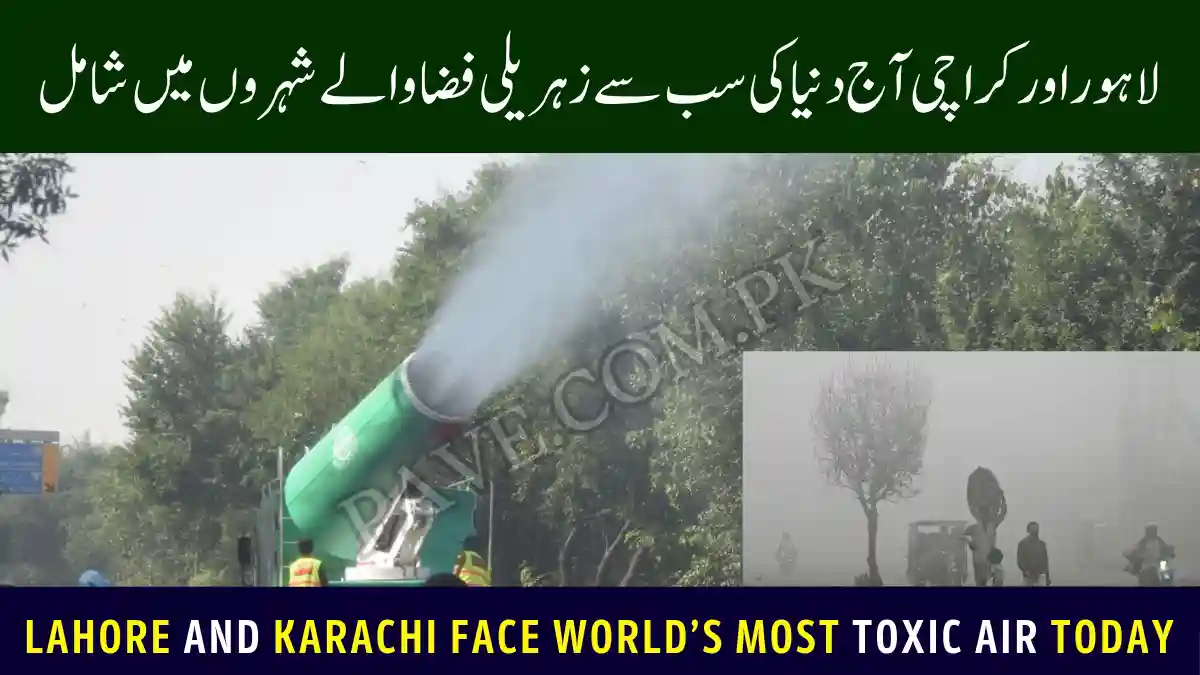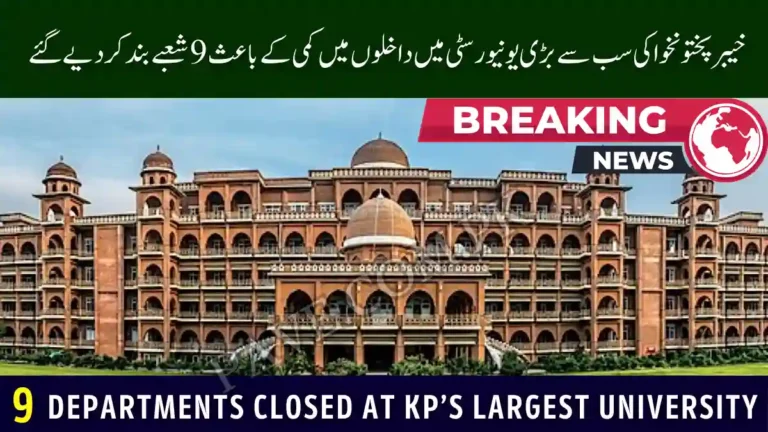Lahore and Karachi Face World’s Most Toxic Air Today
As the winter season begins to set in, Lahore and Karachi face world’s most toxic air today, according to the latest data released by the IQAir global Air Quality Index (AQI). Both major cities of Pakistan have ranked among the top five worst AQI cities in the world, highlighting the growing environmental crisis that threatens millions of lives every year.
The alarming numbers show Lahore with an AQI reading of 284, categorized as very unhealthy, while Karachi follows closely at 161, falling into the unhealthy range. Experts have issued a toxic air alert for both cities, warning that breathing such polluted air for prolonged periods can cause serious health risks — especially for children, the elderly, and those with respiratory or heart conditions.
Lahore’s Smog Situation Worsens as Winter Approaches
Once called the “City of Gardens,” Lahore now finds itself struggling to breathe. The Lahore air pollution level continues to worsen as smog blankets the city, reducing visibility and creating an acrid haze that irritates eyes, throats, and lungs.
Environmental experts say the primary contributors include vehicle emissions, industrial smoke, crop residue burning, and construction dust. Despite multiple anti-smog campaigns launched by the Punjab government, the city’s air quality continues to decline as colder weather traps pollutants closer to the ground.
Local authorities have intensified monitoring and introduced fines for smoke-emitting vehicles and brick kilns, yet environmentalists warn that such short-term measures are not enough. Without long-term policy enforcement and sustainable energy alternatives, Lahore’s smog crisis could worsen in the coming years.
Read More: Shifa Hospitals Merge Subsidiary for Better Management and Growth
Karachi’s Air Quality Also Reaches Alarming Levels
While Lahore often dominates headlines for poor air quality, Karachi smog has quietly grown into an equally serious threat. The Pakistan Air Quality Index now lists Karachi as one of the worst AQI cities worldwide, with pollution levels that routinely exceed safe limits set by the World Health Organization (WHO).
Experts link the rising pollution in Karachi to vehicular congestion, industrial emissions, and marine humidity, which traps fine particulate matter in the air. The city’s rapid urban expansion and lack of green spaces have further intensified the situation.
Environmental analysts note that Karachi’s coastal geography — once thought to be a natural safeguard — now contributes to pollution retention when wind speeds drop. In simple terms, the pollutants have nowhere to go.
Read More: Most Polluted Cities 2025
Global Ranking: Lahore and Karachi Among the Top Five
The IQAir ranking for October 27, 2025, paints a grim picture for Pakistan. Both Lahore and Karachi have made it to the top five most polluted cities globally, alongside some of the most industrialized regions of Asia.
| Rank | City, Country | AQI (US) | Category |
|---|---|---|---|
| 1 | Delhi, India | 333 | Hazardous |
| 2 | Lahore, Pakistan | 284 | Very Unhealthy |
| 3 | Kolkata, India | 168 | Unhealthy |
| 4 | Dubai, UAE | 162 | Unhealthy |
| 5 | Karachi, Pakistan | 161 | Unhealthy |
This ranking once again highlights Pakistan’s deepening air pollution challenge, which has transformed from an environmental issue into a full-blown public health emergency.
Read Also: Today Gold Price in Pakistan
The Health Impact of Pakistan’s Toxic Air
Doctors and medical professionals warn that residents of both cities are being exposed to dangerously high levels of PM2.5 particles — microscopic pollutants that penetrate deep into the lungs and bloodstream.
Long-term exposure to this toxic air can lead to:
- Chronic respiratory diseases like asthma and bronchitis
- Increased risk of heart attacks and strokes
- Weakened immunity and premature aging
- Higher rates of hospitalization and early mortality
In Lahore, hospitals are already reporting a rise in patients suffering from breathing difficulties, throat infections, and eye irritation. Karachi’s doctors are voicing similar concerns as smog levels rise across the city.
Experts urge citizens to wear N95 masks, use air purifiers indoors, and avoid unnecessary outdoor activities — particularly during early mornings and evenings when the Lahore Karachi smog 2025 is at its peak.
Government and Policy Response
The governments of Punjab and Sindh have both announced renewed efforts to tackle the growing pollution problem. The Punjab government has directed the closure of polluting brick kilns and is deploying anti-smog squads to monitor industrial units and vehicles. Meanwhile, the Sindh Environment Department is planning stricter emission regulations and regular inspections of Karachi’s industrial zones.
However, experts stress that enforcement alone is not enough. Pakistan must move toward sustainable urban transport systems, renewable energy, and green city planning to combat the root causes of air pollution. Without large-scale investment in clean energy and mass transit, both Lahore and Karachi risk becoming permanent residents of the global “toxic top five.”
Read More: PITB SheWins Women in Tech Graduation Ceremony 2025
Why the Crisis Demands Urgent Action
Environmental scientists argue that the Lahore and Karachi Face World’s Most Toxic Air Today situation is not a seasonal event but a structural failure — the result of years of neglect in urban planning and environmental policy.
Air quality degradation is costing Pakistan billions annually in healthcare expenses, lost productivity, and reduced agricultural yields. Studies have shown that cities with severe smog see declines in worker performance and educational outcomes among children.
Pakistan’s policymakers now face mounting pressure to integrate air pollution management into national climate and economic agendas. A combination of data-driven air monitoring, public education, and regional cooperation with neighboring countries could help control cross-border smog and reduce overall emissions.
The Way Forward
Experts agree that reversing the Lahore Karachi smog 2025 crisis will require a comprehensive, multi-sector approach. Steps like replacing old vehicles with cleaner models, transitioning industries to low-emission technologies, and introducing more urban green zones can make a measurable difference.
Citizens, too, have a role to play — by adopting eco-friendly practices, carpooling, and supporting renewable energy initiatives. Collective public and private action remains the only sustainable path toward breathable skies.
Conclusion
The harsh reality is that Lahore and Karachi face world’s most toxic air today, a warning that Pakistan can no longer afford to ignore. With both cities ranking among the worst AQI cities globally, the time for reactive measures has passed. What’s needed now is a bold, long-term strategy that prioritizes public health, environmental protection, and sustainable development.
Until then, millions of citizens in Pakistan’s largest cities will continue to wake up to the sight — and sting — of the thick, grey smog that has come to define their skyline.







